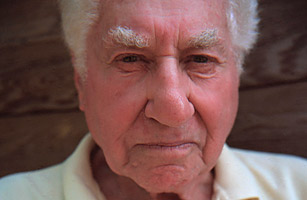
Marlon Brando, as the dockworker and ex-boxer Terry Malloy, is sitting in the backseat of a taxi, reminiscing with Rod Steiger (playing Terry's brother Charlie) about the night Charlie told Terry his big fight was fixed and he'd have to take a dive. If it weren't for that night, Brando says, "I coulda had class. I coulda been a contender. I could've been somebody, instead of a bum, which is what I am, let's face it."
On the Waterfront, the 1954 dockside drama Budd Schulberg wrote for director Elia Kazan, was seen as both a bold exposé of racketeers and a defense of those film people, like Schulberg and Kazan, who had named former colleagues as communists before Congress. The movie won eight Oscars, including one for Schulberg, the self-described "Hollywood prince." His best work anatomized corruption in the more rapacious forms of entertainment: boxing (the novel and film The Harder They Fall), TV and radio (A Face in the Crowd, a 1957 collaboration with Kazan) and the movie business itself (his 1941 novel What Makes Sammy Run?).
The son of Paramount production boss B.P. Schulberg, Budd grew up in a world of sunshine, attentive starlets and an industry that sheathed its killer instincts in piety and swank. As a writer, he wanted to not praise the mass media but bury it. Sammy Glick, the screenwriter antihero of What Makes Sammy Run?, was a creature so crass that studio bosses made sure the novel never became a Hollywood movie. Yet Sammy was soon adopted as a template for go-getter corporate America in Hollywood and on Wall Street. A Face in the Crowd's Lonesome Rhodes, played by the young Andy Griffith, was just as venal and seductive: a singing hobo who became a prime-time demagogue. That image stuck too: a half-century later, Keith Olbermann would slap the Lonesome Rhodes tag on Glenn Beck. The moralist in Schulberg surely squirmed at the uses his characters were put to, but Schulberg the writer had to be pleased that Sammy and Lonesome, like Terry Malloy, achieved a pop cultural immortality.
— Richard Corliss